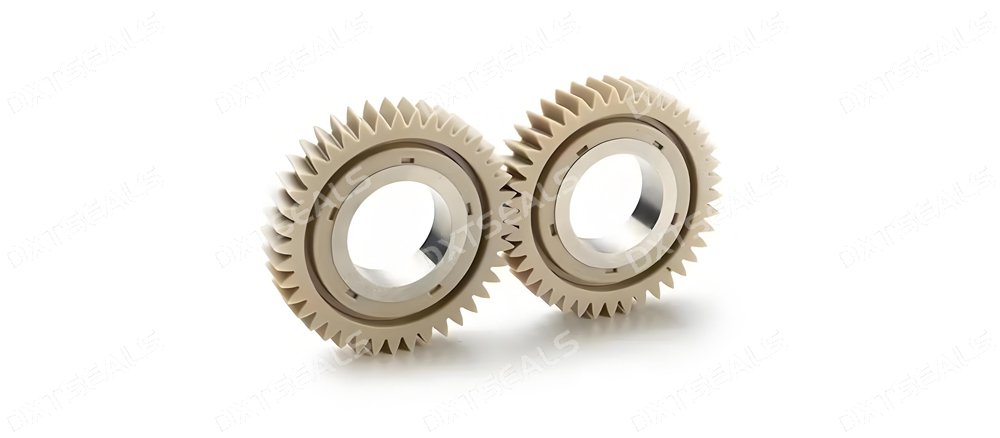
In modern manufacturing, plastic materials play a pivotal role across nearly every industry. However, not all plastics are created equal. The two main categories—engineering plastics and commodity plastics—differ significantly in terms of performance, cost, and application.
At DXTSEALS, understanding these differences helps us provide customers with customized plastic solutions that meet specific mechanical, thermal, and chemical requirements.
🔍 What Are Engineering Plastics?
Engineering plastics are high-performance materials designed for mechanical strength, thermal stability, chemical resistance, and long service life. These plastics are commonly used in demanding applications where commodity plastics would fail.
Common Engineering Plastics Include:
-
POM (Polyoxymethylene / Acetal): High strength and dimensional stability
-
PA (Nylon): Excellent wear resistance and impact strength
-
PC (Polycarbonate): High transparency and toughness
-
PBT (Polybutylene Terephthalate): Good electrical insulation and heat resistance
-
PEEK (Polyether ether ketone): Exceptional high-temperature and chemical resistance
🔍 What Are Commodity Plastics?
Commodity plastics are low-cost materials used for high-volume applications where moderate mechanical performance is acceptable. They are suitable for general-purpose consumer goods and packaging.
Common Commodity Plastics Include:
-
PE (Polyethylene): Lightweight, flexible, and moisture-resistant
-
PP (Polypropylene): Chemically resistant and economical
-
PS (Polystyrene): Rigid and cost-effective for packaging
-
PVC (Polyvinyl Chloride): Widely used in construction and electrical insulation
-
PET (Polyethylene Terephthalate): Popular for bottles and films
⚖️ Key Differences: Engineering vs. Commodity Plastics
| Property | Engineering Plastics | Commodity Plastics |
|---|---|---|
| Mechanical Strength | High | Moderate to low |
| Thermal Resistance | Excellent (up to 250°C+) | Limited (usually <100°C) |
| Chemical Resistance | Strong against solvents/acids | Varies widely |
| Cost | Higher | Lower |
| Durability | Long-term use | For short- or medium-term use |
| Typical Applications | Automotive, aerospace, electronics | Packaging, containers, toys |
🏭 Industry Applications
✔ Engineering Plastics:
-
Automotive: Gears, fuel system parts, bushings
-
Medical: Surgical instruments, diagnostic devices
-
Aerospace: Cabin components, insulation brackets
-
Electrical: Connectors, insulators, casings
-
Machinery: Bearings, pulleys, sliders
✔ Commodity Plastics:
-
Packaging: Bottles, films, food containers
-
Household goods: Buckets, chairs, toys
-
Construction: Pipes, siding, cable covers
-
Consumer electronics: Casings, panels
💡 How DXTSEALS Helps You Choose the Right Plastic
At DXTSEALS, we specialize in custom plastic part manufacturing, using both engineering and commodity plastics depending on your requirements. Our experts analyze factors such as:
-
Operating temperature
-
Mechanical load
-
Chemical exposure
-
Cost-performance balance
-
Production volume
This ensures every customer gets a cost-effective solution without compromising performance.
✅ Conclusion
The choice between engineering plastics and commodity plastics depends on your specific application, environment, and budget. While commodity plastics are ideal for mass-market goods, engineering plastics are indispensable for precision, safety, and longevity.
🔗 To learn more or request a quote for custom plastic components, visit www.dxtseals.com
DXTSEALS – Precision Plastic Solutions for Every Industrial Challenge
